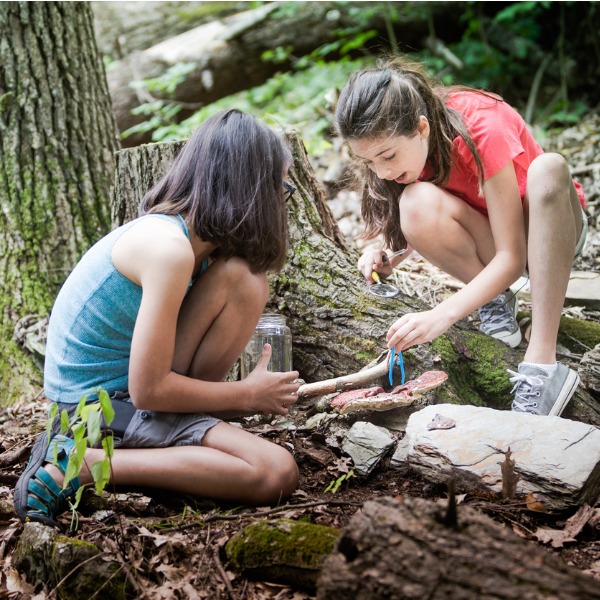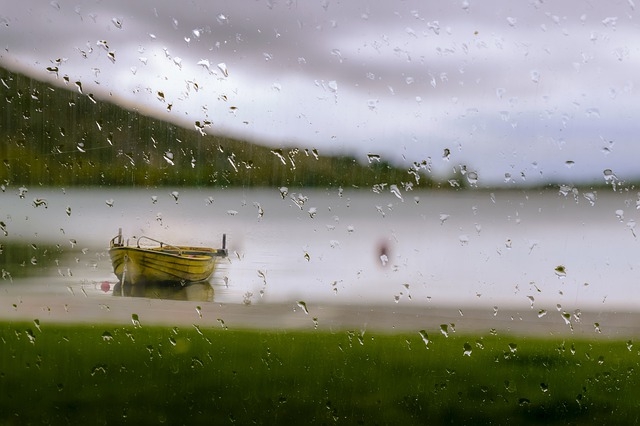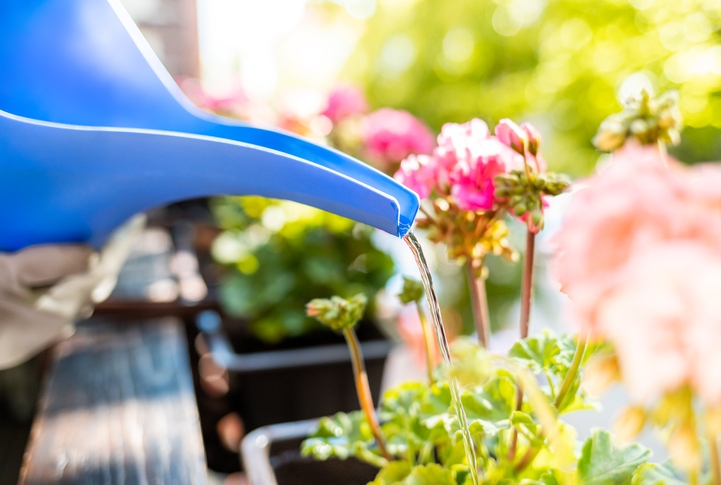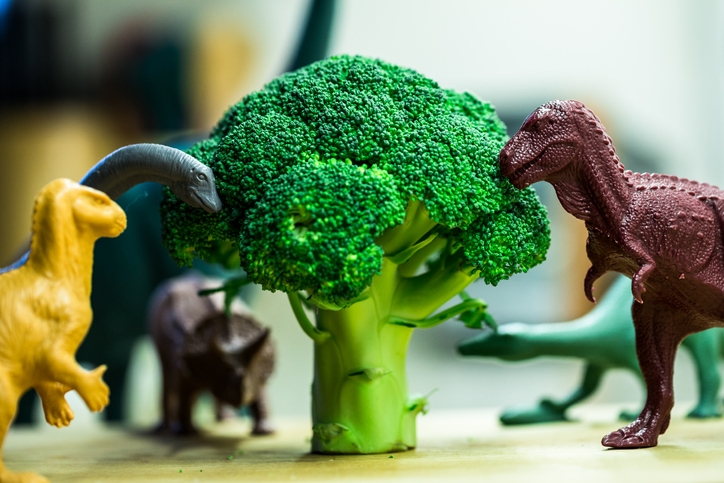Developing a Hypothesis

Two girls exploring plant life in the woods (Christine Glade, iStockphoto)

Two girls exploring plant life in the woods (Christine Glade, iStockphoto)
How does this align with my curriculum?
| Grade | Course | Topic |
|---|
Learn what makes a good hypothesis, and how to develop one.
Developing a Scientific Hypothesis
After identifying a testable question, it is important for students to research and or/review what they already know about the scientific principles involved in their experimental inquiries. After that, and before conducting the inquiry through testing and observation, students need to develop a scientific hypothesis.
Is a hypothesis the same as a guess?
The short answer is no! Anyone can make a guess about anything. Guesses are not generally based on knowledge, but rather are rough estimates that people give when they don’t know the answer to a question. A scientific hypothesis, on the other hand, is not only based on prior knowledge and experiences but also on known factual information obtained through research.
Misconception Alert
Like making an estimate in math, a hypothesis should be written before doing an inquiry, not after!
Is a hypothesis the same as a prediction?
Again, the answer is no, although the distinction between these two terms is not always clear. A prediction is an estimate or forecast about something that might happen or the way that something will be based on prior knowledge and experience and known facts (e.g., I predict it will rain tomorrow, I predict that my plant will have two seed leaves, etc.).

Image - Text version
Shown is a colour photograph of a boat near a beach in the rain.
The camera lens is sprinkled with rain drops. These are in sharp focus, in the foreground. Most of the rest of the photograph is out of focus in the background.
There is a strip of dark green grass along the bottom of the frame. Above that is a strip of beige sand. The water is shaded from light grey at the bottom to medium grey at the top. A dark green hill rises up behind the water, to the left. The sky is mottled with grey, white and blueish grey clouds.
A small, yellow wooden rowboat is in sharp focus. It is moored to the shore with a white rope, next to a round, orange float.
Like a prediction, a hypothesis forecasts what might happen, but a hypothesis goes beyond a prediction. It includes not only what might happen, but why something might happen. In other words, it explains the relationship between variables. The most significant difference between a prediction and an hypothesis is that a hypothesis is intended to lead to a testable investigation, whereas a prediction is not.
To put it in a different way, a prediction is an estimate of an end result (e.g., I predict that the plant will be tall) whereas a hypothesis is a statement that attempts to explain a phenomena by relating cause and effect (e.g., if we give plants more water, then they will grow taller).

Image - Text version
Shown is a colour photograph of water falling from a blue watering can onto a pink flowering plant.
The frame is filled with green foliage. In the background, out of focus, is a row of pink, flowering plants in boxes along a wooden railing. In the foreground, a gloved hand tips a large, cornflower blue watering can over the first plant.
Misconception Alert
Not every inquiry lends itself to the testing of a hypothesis. Many inquiries involve research questions that ask if relationships exist among variables or involve situations where testing is not possible, such as population inquiries, historical inquiries, etc. For example, you could never test a hypothesis about which type of food a given dinosaur preferred to eat!

Image - Text version
Shown is a colour photograph of miniature plastic dinosaurs gathered around a piece of broccoli that resembles a tree.
A piece of broccoli stands upright in the middle of the photograph. It has a long, pale green stem and a full, dark green floret. It looks like a green tree with branches and tiny leaves.
Five toy dinosaurs have been placed around the broccoli so they look like they're snacking it. They are a little bit shorter than the broccoli, so their mouths reach the bushiest parts of it.
The dinosaur in the foreground is dark reddish brown with scaly-looking skin and tiny arms. Behind it, a dark green dinosaur with a long neck stretches to the low branches. In the background, a dark brown triceratops looks on. The long neck of a black dinosaur reaches in from the left, to get the higher leaves. On the far left, a bright yellow dinosaur is about to join the meal.
How do you develop a scientific hypothesis?
In order to develop a hypothesis, one should have:
- A good testable question
- Understanding of the dependent, independent and control variables of interest
- Some prior knowledge, such as from observations and research
- Thoughts about how the inquiry could be done (the method)
For example, students may begin with the question:
How does the duration of light exposure affect the surface area of tomato plant leaves?
The variables are:
- Independent = duration of light
- Dependent = surface area of plant leaves
- Controlled = water, soil, seed source, etc.
How then do we formulate a hypothesis from this testable question? A good hypothesis tends to follow the format:
If we do/change this
then this will happen/be observed
because we know this.
If these changes are made to a certain independent variable,
then will we observe a change in a specific dependent variable
because of our prior knowledge and research.
In the example above, the students have identified that they are interested in exploring how the duration of light affects plants, perhaps exposing plants from the same batch of seeds to light for different numbers of hours (e.g., one hour, two hours, etc.). Knowing that plants need light to grow (from prior knowledge or research), then they may hypothesize that the leaves of a plant may be larger given a longer exposure to light. Knowing all of this, their hypothesis might be:
If we expose plants to a greater number of hours of light, then the surface area of the tomato plant leaves will be larger because light affects plant growth.
What makes for a good hypothesis?
A good hypothesis is:
- Astatement The hypothesis is not the same as the testable question. The hypothesis is a tentative explanation of what is thought will happen during the inquiry.
- Testable What is changed (independent variable) and what is affected by the change (dependent variable) should be measurable and observable.
- Falsifiable A good hypothesis can be either supported or shown to be false by the data collected.
- Clear. It should be obvious what will be tested, how it will be tested (what will be measured to prove or disprove the hypothesis), and what is expected to happen.
A good question and hypothesis should also help students find answers that are not obvious to them or generally known. For example, most students will know that if you do not water a plant, it will die, so developing a hypothesis such as:
If we stop watering our plants then the plants will die because plants need water in order to live.
is overly simplistic and will not help students expand their knowledge. A good experimental inquiry will help students discover things they do not already know.
Misconception Alert
The goal of a hypothesis is NOT for a student to be “right.” Having evidence that shows a hypothesis to be false is just as important as having evidence that shows it to be true.
A hypothesis is NOT something you prove – it is something you test!
How to develop a Tomatosphere™ hypothesis
In the Seed Investigation, a testable question is provided to the students:
How does exposure to the space environment or space-like conditions affect the number of tomato seeds that germinate?
In the variables section, the dependent and independent variables were identified.
Independent variable: Seed treatment – Some seeds have been to space or are exposed to space-like conditions in years when seeds do not go to space, while some seeds have not been to space or exposed to space-like conditions.
Dependent variable: Number of seeds that germinate.
What is not provided to the students is a hypothesis to follow from this question. Using the “if…..then…because….” format, have the students develop their hypotheses for the Tomatosphere™ testable question. For example:
If tomato plant seeds are exposed to the conditions of space, then fewer ‘space’ seeds will germinate than non- ‘space’ seeds because radiation levels found in space may damage cells in the seeds.
This is not the only possible hypothesis, but it shows some understanding of how plants might be affected by space conditions (e.g., radiation affecting DNA in cells, microgravity affecting growth, etc.) which might be derived from prior knowledge or research.
Is this a good hypothesis? Yes
- It is a statement.
- It is testable. What is changed (being in space or not) and what is affected by the change (number of seeds germinated) can be measured and observed.
- It is falsifiable. The student can use the data collected to be able to decide if it supports their hypothesis or if it shows the hypothesis is false (statement is false – more ‘space’ seeds germinate or the germination rate is the same).
- It is clear. It should be obvious what will be tested (seed germination), how it will be tested (seeds are grown to the point of germination), and what is expected to happen (fewer space seeds will germinate).
To assist with practicing writing a hypothesis, students could be provided with a checklist, such as this one, also available as a [Google doc] and [PDF].
Writing a Strong Hypothesis Checklist
Guided Practice
Exercise 1
Have students read the following statements and determine if these are good, okay, or poor hypotheses and why.
- If we expose plants to red light, after 6 weeks then the plants will have larger leaves than plants exposed to green light, because objects that appear green, like leaves, reflect green light which they could not use for photosynthesis.
Good Okay Poor - If we grow plants in the classroom, then they will do better than plants grown outside, because we can look after them.
Good Okay Poor - If we mix maple syrup in the water we give to our tomato plants, then they will grow better because plants need sugars for energy.
Good Okay Poor
Exercise 2
Have students use the Writing a Strong Hypothesis Checklist for creating a Tomatosphere™ or other hypothesis.
Answers
- A):
Good Why is this a good hypothesis?
✓ It is a statement that follows the “if….then…because” format.
✓ It is testable. What is changed (red light vs. green light) and what is affected by the change (size of leaves) is measurable and observable.
✓ It is falsifiable. It can be supported by evidence (statement is true – leaves will be bigger, statement is untrue – leaves will be smaller or the same size).
✓ It is clear. It is obvious what will be tested (two colours of light), how it will be tested (at six weeks of age the plant leaves will be measured), and what is expected to happen (plants grown in red light will have bigger leaves).
B):Poor Why is this a poor hypothesis?
✓ It is a statement that follows the “if….then…because” format.
✓ It is not testable. The variables are very vague. What are the classroom conditions compared to the outdoor conditions? Is the interest in soil? Light? Temperature? What kinds of plants will be grown.
✗ It is not falsifiable. It would be difficult to support or falsify with evidence because it is vague.
✗ It is not clear. It is not obvious what will be tested (Soil? Temperature? Light?), how it will be tested and what is expected to happen (what does “better” mean? Taller? Bigger leaves? Flower sooner?).
Have students work on changing this vague hypothesis into a more specific one by identifying variables to explore.
C):Okay Why is this just an “okay” hypothesis?
✓ It is a statement that follows the “if….then…because” format.
✗ It is somewhat testable. What is changed (sugar water vs. regular water) is clear, but what is affected by the change (“better”) is vague. Will the plants be taller? Grow faster?
✗ It is not falsifiable. It would be difficult to support or falsify with evidence because the “better” is vague.
✗ It is somewhat clear. It is obvious what will be tested (maple syrup being added to the water) and how it will be tested, but what is expected to happen is not clear (what does “better” mean? Taller? Bigger leaves? Flower sooner?).
Have students work on changing this somewhat vague hypothesis into a more specific one by identifying a dependent variable.
Learn More
A Strong Hypothesis - Science Buddies (2010)
This blog post by Science Buddies explains the parts of a good hypothesis, and the role a hypothesis plays in the scientific process.
Theory vs. Hypothesis vs. Law… Explained! (2015)
This video (7:11 min.) from PBS Studios Be Smart explains how these words mean something totally different in science than in everyday speech, and how they all help us understand how the universe works.
Misconceptions about Science
This page by Understanding Science at UC Berkeley gives a thorough definition of the word hypothesis, in a scientific context, as opposed to everyday language.
What is a Scientific Hypothesis? (2022)
This article by Alina Bradford at Live Science discusses what makes a hypothesis testable, the different types of hypotheses, and hypothesis vs. theory.
Writing a Hypothesis (2013)
This video (4:58 min.) by mreppsclassroom explains the purpose of a hypothesis and how to construct one.